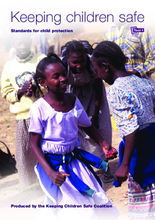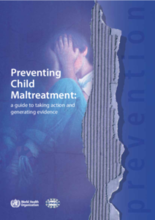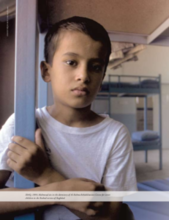Displaying 13821 - 13830 of 14551
Guidance on the formation of multidisciplinary teams for the provision of services to child victims of abuse and trafficking.
General principles for the protection of trafficked children. Guidance is given on identification, appointment of a guardian, registration, interim care, case assessment, durable solutions, access to justice, costs, and research issues.
Two documents containing training exercises and materials for staff on their responsibilities in safeguarding children. It includes activities on childhood, understanding child abuse, recognizing and responding to child abuse concerns, and making your organization safe for children.
Guidance and activities for organizations in implementing internal child protection standards
A set of basic standards for organizations to implement in order to fulfill their responsibilities in safeguarding children from abuse and exploitation
Standards for shelters and care providers responding to children who have been trafficked. It gives guidance and practice examples of intake procedures, interim and longer term care, support services, integration and reunification
A set of standards for agencies that provide child care/day care services within the family home e.g. nannies, child minders, and babysitters.
Multi-disciplinary information and tools on assessing the incidence of child abuse and neglect, the risk and protective factors prevalent in families and communities, and support services to prevent and respond to violence against children.
This is a chapter from the United Nations Secretary-General’s Study on Violence Against Children that specifically explores the factors contributing to violence against children in institutional care and justice institutions. This chapter includes sections on the sources of violence against children in institutional care, the impact of institutional care on children’s health and development, and the populations of children most likely to become institutionalized.
Guidance on supporting children, families, and communities affected by HIV and AIDS. Covers topics such as ensuring adequate family support for children affected by HIV and AIDS, supporting child headed households, small group homes and collective foster care.









